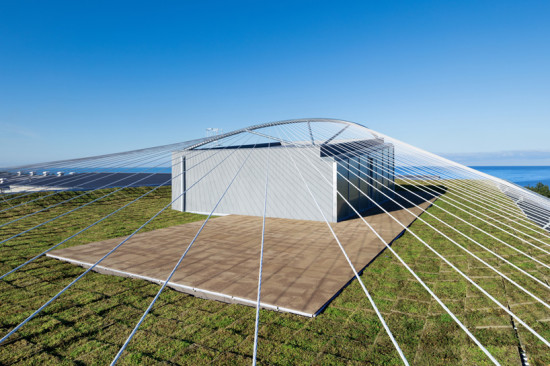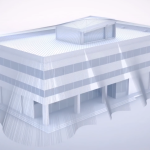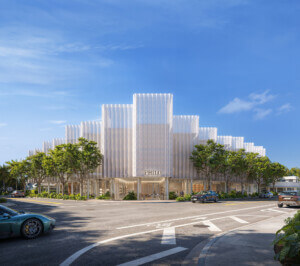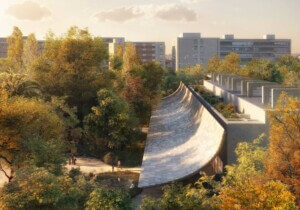Japanese architect Kengo Kuma has given an office in Nomi, Japan, a carbon fiber curtain that spans outwards from the roof edge in an undulating, wave-like fashion. The building, known as “fa-bo,” is home to the company Komatsu Seiren who uses it as a “fabric laboratory” to manufacture, research, and exhibit new clothing materials.

Kuma’s renovation isn’t just for aesthetics: in a first, the carbon fiber makes the building more earthquake resistant. According to Kuma’s website, the fiber rods are supposedly ten times stronger than iron.
In a video (see below) Kuma explains how carbon fiber was an obvious choice as it facilitated “transparent quake resistance.”
https://youtu.be/SIorJpr784o
The feature also draws on a local technique of braiding ropes which makes it possible to “add further flexibility to the carbon fiber,” something Kuma described as a “fascinating” development. “I find it very interesting that the answers were right there. Bringing together technologies that are both old and new and then mixing them together…is outstanding” he said.
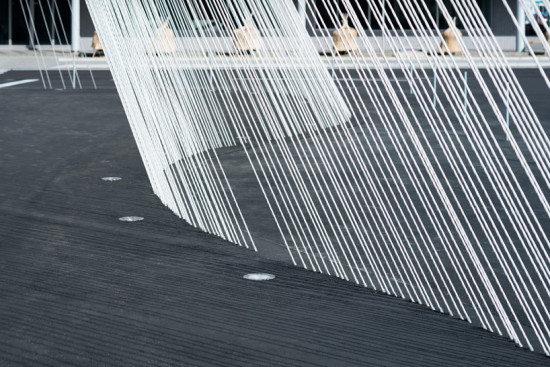
Although a helpful solution to counter seismic activity, fixing the rods to the building forced Kuma and his team to meticulously focus on every detail in the joinery. Kuma also believes that the carbon fiber rods have the potential to shape 21st century architecture. “We believe there is something new in this construction material,” he said. “As far as materials are concerned, fibers are very strong and gentle to people….In fact, it has the potential for creating a major revolution in the world of construction,” he went on to say.

The rods are also employed inside the building too, allowing light to filter into spaces. On the roof, “experimental greening” uses porous ceramic panels (called Greenbiz) that are created as a byproduct of the fiber manufacturing process.
